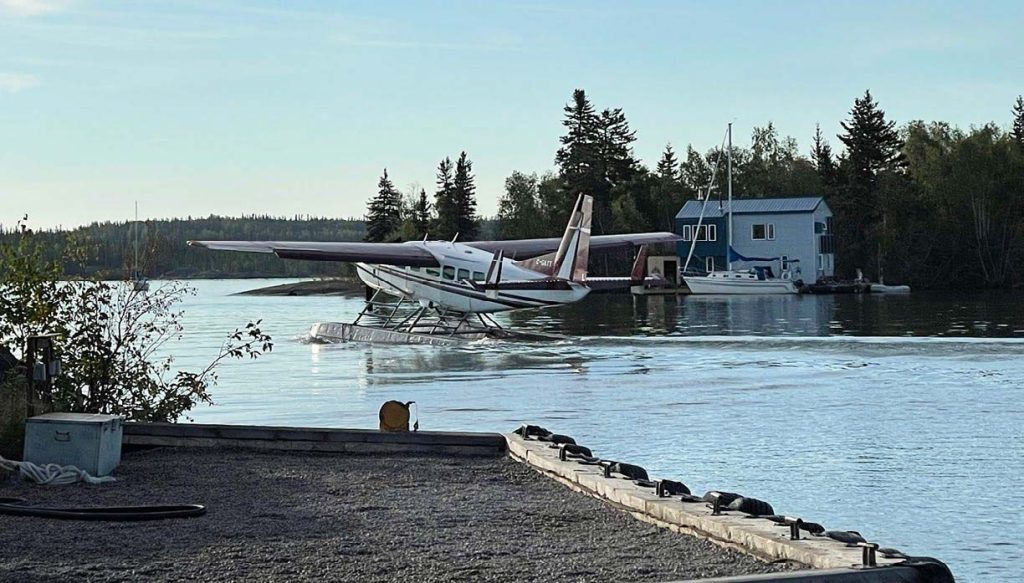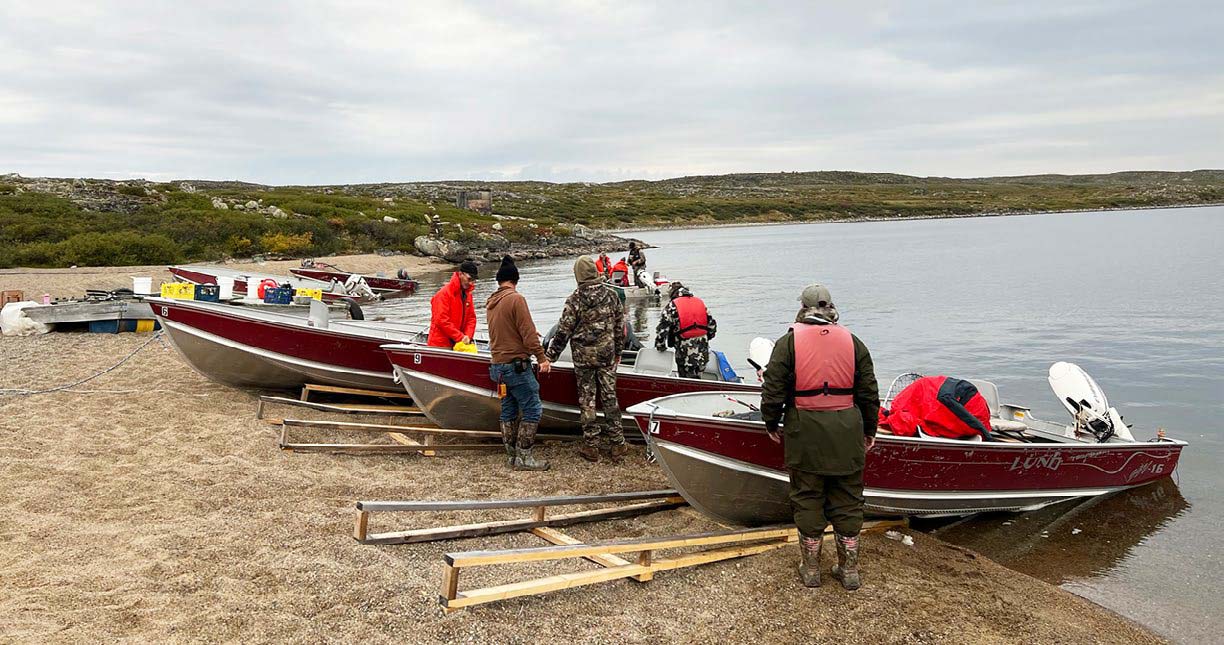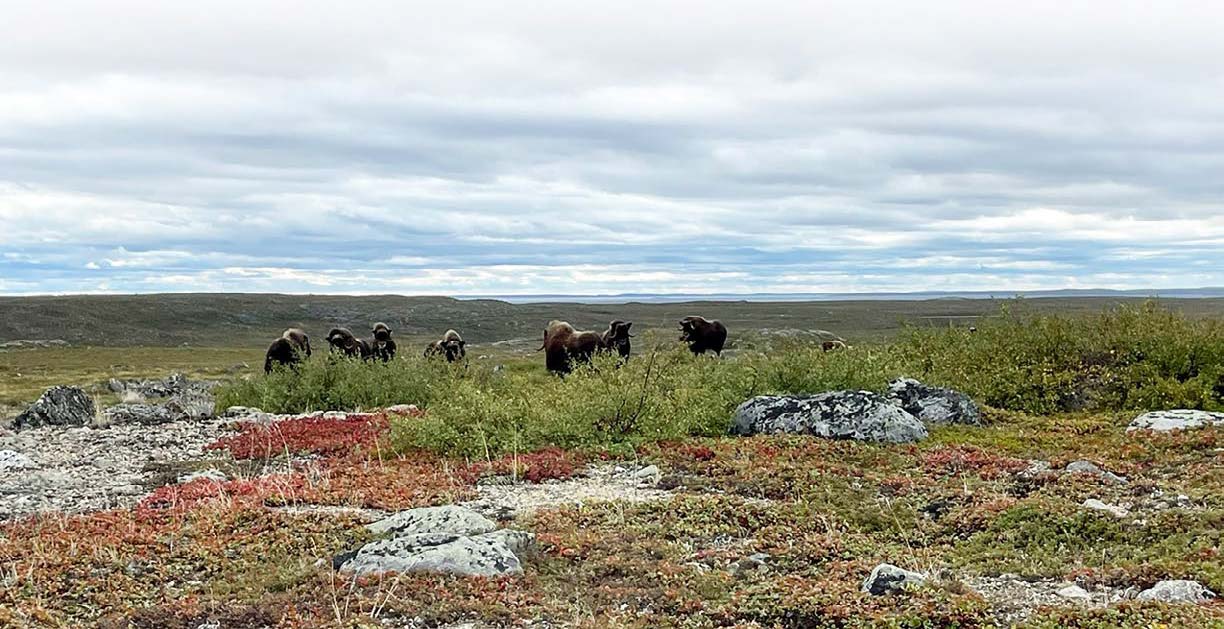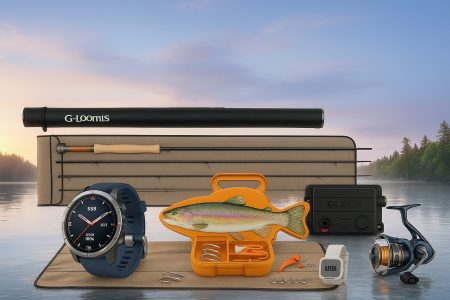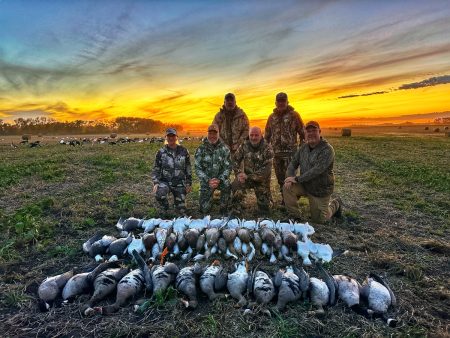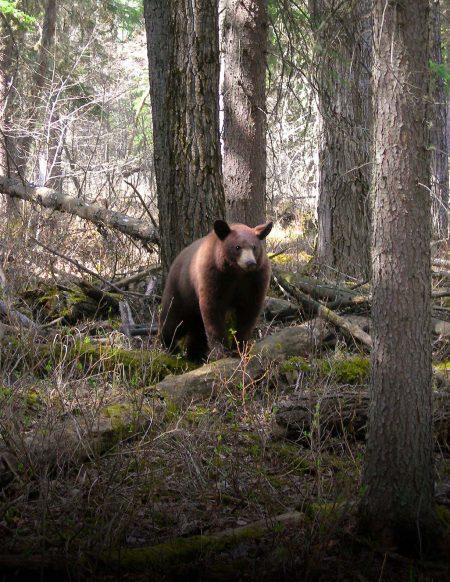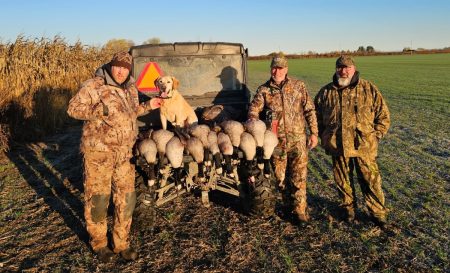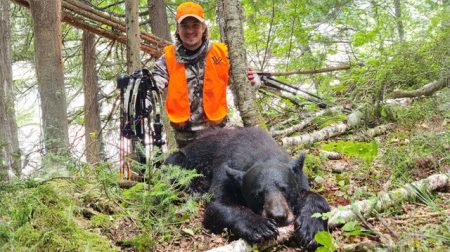I began my hunting career 17 years ago, getting on a plane in Yellowknife, in the Northwest Territories, Canada. It was a hunt for central barren ground caribou, which ended up being the first big game animal I ever killed! Actually, it was the first animal I ever hunted in my life. I was a late starter, but there sure has been a lot of big game hunts since then.
This time I was boarding a float plane destined for Aylmer Lake Lodge, where I was going to be hunting barren ground muskox, less than 100 kms from where it all began 17 years earlier. Coming back was a reminder of where I came from, how hunting has changed my life and the amazing journeys I’ve experienced. Since then, I’ve hunted five continents and taken many animals, but I’ll never forget where it all began.
This trip started when friend and outfitter, Kevin McNeil, contacted me. I could tell by the tone in his voice that he was excited. His outfitting area in the Northwest Territories had just been allocated the first non-resident tags for barren ground muskox. He wondered if I would be interested in hunting with him at Aylmer Lake Lodge. This hunt would be during the second season, in August 2022. It was an amazing opportunity! Of course, I was interested! I had just discovered that I only needed one more big game animal to complete by Grand Slam Club/Ovis Super Ten of North American Big Game and that was either a bison or a muskox. I was also beyond excited about the prospect of experiencing not only an amazing hunt, but also the chance to fish for huge lake trout. My partner, TJ Schwanky, was just about as excited as me and came along for the adventure and to film the hunt for Outdoor Quest TV.
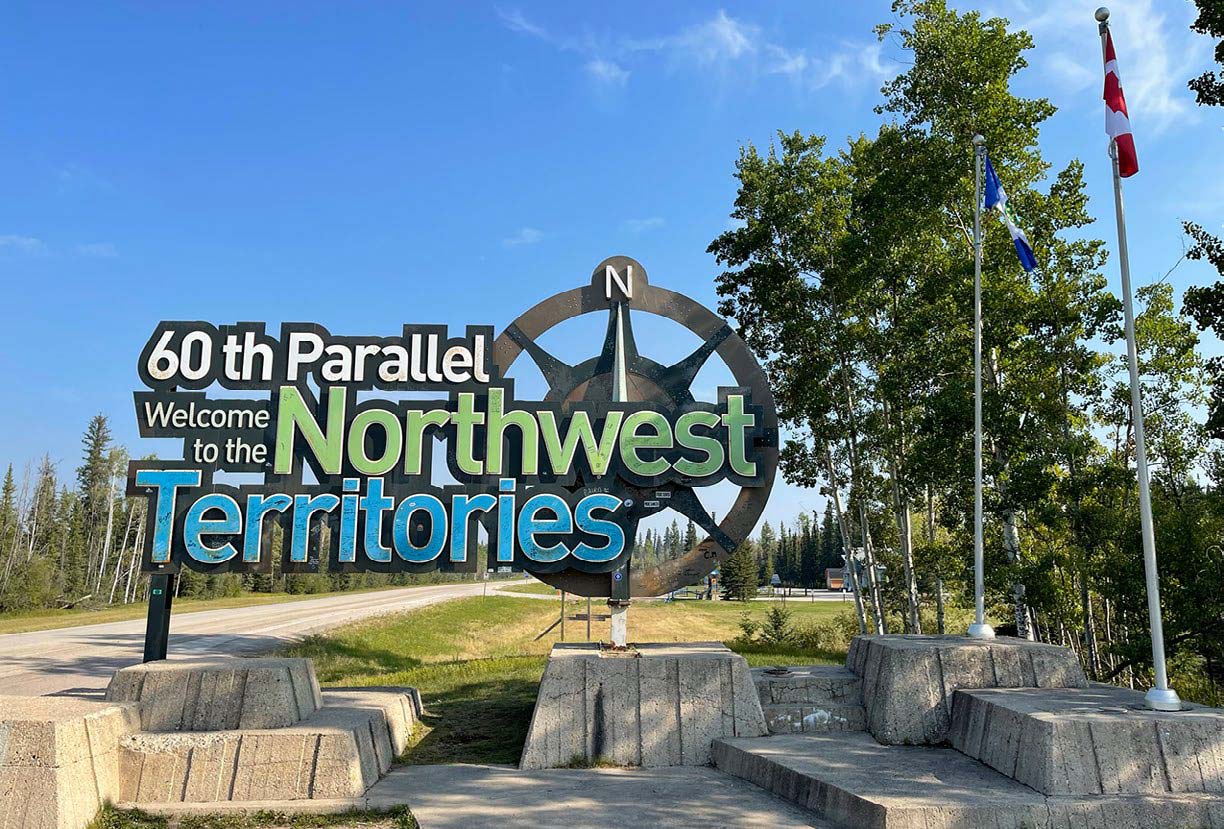
We elected to drive from our home in Alberta, so that we could bring the meat home harvested from my hunt. I had experienced this exact drive on my first hunt, so I was really excited to see if anything else had changed, besides me in the past 17 years. It is a 1,719 km/1,066- mile drive to Yellowknife and we took a leisurely two days to get there and experienced some of the amazing sights along the way. There were long stretches of this drive without cell phone reception, so before we left home, I downloaded information and photographs of barren ground muskox and how to field judge them. Research is always important before a hunt, and this definitely came in handy on this one.
The realization that the hunt was really happening, hit me as the giant welcome to the 60th Parallel and the Northwest Territories sign appeared. After checking into our hotel in Yellowknife, we let Kevin know that we had arrived. He instructed us to be at the Air Tindi float plane dock first thing the next morning to fly into Aylmer Lake Lodge. Needless to say, sleep wasn’t entirely successful, but I was ready to go first thing the next morning. Upon arriving at the Air Tindi float dock, we were greeted by the hustle and bustle of the crews getting the float planes ready for the day. It was a gorgeous sunny day and after safety briefings and flight checks were completed, the float plane taxied through the harbour. To say I was beyond excited was an understatement!
It seemed like we had been flying over the vast expanses of tundra and water for an eternity. I just wanted to get there! In reality it was only two hours, when Aylmer Lake Lodge finally came into view. The pilot circled over the camp and touched down on the lake’s placid surface with ease. Kevin and the crew greeted us on the beach and directed us up to the main lodge for coffee, while they unloaded the plane. The first day was spent going over licenses, getting our gear ready and planning for the next day. Once settled in our cabin, the gear came out of the bags and got organized. I planned to take the muskox with my bow but brought my trusty Sako 300 Win mag as a back up.

Kevin explained that they were the first outfitter in the Northwest Territories to be allocated barren ground muskox tags in Unit U. Since no outfitter had hunted the area before, there was going to be a bit of a learning curve, but he was confident we’d all take great bulls. One of his pilots, an NWT resident, had taken the new world record near the lodge in 2020. The lodge sits only 60 km from the Thelon Game Sanctuary, which was established in 1927 to protect muskox and caribou. This Sanctuary is the largest wildlife refuge in Canada, at 52,000 square kilometres (20,077 square miles).
On day one of the hunt, the weather forecast was for rain and high winds by noon. Preparation was key and we made sure we had plenty of layers on before heading out. We started the day with a hearty breakfast then grabbed our backpacks, bow, rifle, and camera gear and met Kevin on the beach. We slipped on our life jackets and climbed into the boat. The plan was to head to a large bay off of the main lake, where Kevin had spotted a herd of muskox the previous week. We slowly cruised down the lake and watched the shoreline; stopping to glass at every black lump that caught our eye but most ended up being rocks.
We drove up an inlet and skuttled the boat on some rocks and went for a walk up to the top of a ridge, for a higher vantage point of the area. All we saw were two central barren ground caribou. I thought to myself…that had to be a sign. We went back to the boat and headed out in search of the elusive muskox.
After Kevin navigated through a very shallow, rocky strait, the wind started to pick up and the water was getting rough. Glassing was tough from the boat but as we came around a bend, Kevin asked me if I saw something in the distance. I steadied my binos as best I could and scanned the ridge. Rock… another rock… another rock… and then a black blob. The black blob moved. Muskox I thought to myself! My heart started thumping out of my chest and I felt giddy with excitement. There were about six or seven out in the open, but they were headed over a bench, and we thought there may be more on the other side. A herd of caribou were working their way along the same ridge. Once the muskox and caribou were out of sight, we quickly beached the boat and unloaded our gear. With backpacks donned, we slowly made our way up the first ridge, taking care not to skyline ourselves. On the way up, we spotted five bull caribou but luckily, they didn’t spot us. We slowly picked our way through the arctic tundra; all eyes were peeled for the slightest sign of black.
Kevin was first to spot the group of about 15 or 20 bedded on a ridge, 300 yards distant. We belly crawled up and got in position to scope out the herd. There was also one young bull just 50 yards below us. I was pretty sure he was sent on a reconnaissance mission to figure out what we were, but he wasn’t overly concerned. Through the binos, we could see two exceptional bulls in the herd. Using the field-judging skills learned on the drive up, we sat there picking them apart and trying to determine which one was the biggest. While both were close in size, we finally decided that one was definitely bigger than the other. While formulating a plan for a stalk, another bull appeared. He absolutely dwarfed the other two bulls. At this point, it was 11:00 in the morning. The herd was about 300 yards away but there was no way of shortening the distance without spooking them. In an attempt to get a better look at Mr. Magnificent, we backed out and hiked down the valley using the ridge to conceal us. Much to my chagrin, the ridge didn’t continue the whole way down the valley, and we found ourselves completely exposed as we moved to get to the next ridge. Keeping our heads down, we all took a collected breath and crossed the valley floor. To my amazement we weren’t caught!
After a quick happy dance, we put down our packs, and I readied my bow. It was then that I realized that the wind was really starting to pick up. I really wanted to take the muskox with my bow and had practiced for months and was completely confident out to 60 yards, but not in a wind like this. We belly crawled up to the edge of the ridge, and there they all were! A group of eight had already sensed something and formed a classic defensive circle.
At this point, the wind was howling. One bull from the group ran to the right but I knew that wasn’t the big guy. I still hadn’t seen Mr. Magnificent. He had a distinctive zigzag on his boss. We were surrounded by muskox, including four fabulous bulls. A little further out, I saw two muskoxen bedded behind a rock. That’s where the big bull was. We tried to sneak in and get a little closer to the massive bull, but there were just too many eyes. Every time we gained a little bit of ground, they would move, and we would lose it. After playing cat and mouse for about two hours, I mentioned that I had read somewhere, that someone was successful by walking straight up on muskox in the wide open. After a quick discussion, we all decided to give it a shot as a last-ditch effort. We walked right towards him. He was all alone and quartering to us at 47 yards…but we had a 30 mile an hour cross wind. It was completely nerve wracking. Any other day of the week, I could have taken the shot, but not that day with the high wind. And then, he just walked away. Noooo, don’t walk away I thought to myself! Kevin said he was at 100-yards, and unfortunately, I knew I was out of options with my bow. The wind was just too strong, and I knew I had to get within 20 yards for an ethical shot. The herd was starting to get antsy, and they’d had enough of us in close proximity to them. I had a decision to make. We could walk away and come back tomorrow with hopes of finding the herd again, but it was a big gamble. I decided I couldn’t walk away from a once in lifetime bull like this. With mixed emotions, I put my bow aside and picked up the rifle.
There was a big rock in front of me that was perfect for a solid rest. I set the rifle on top and leaned my body against the rock. I had him in my sight. He was standing broadside at a 110-yards. I calmed my breath and squeezed the trigger. He humped at the impact and was obviously hit hard. He ran a short distance, then another bull ran at top speed toward him, asserting his dominance over the obviously injured bull. He moved to avoid the charging bull and stopped right behind another bull. I couldn’t fully see him, but I knew he went down.
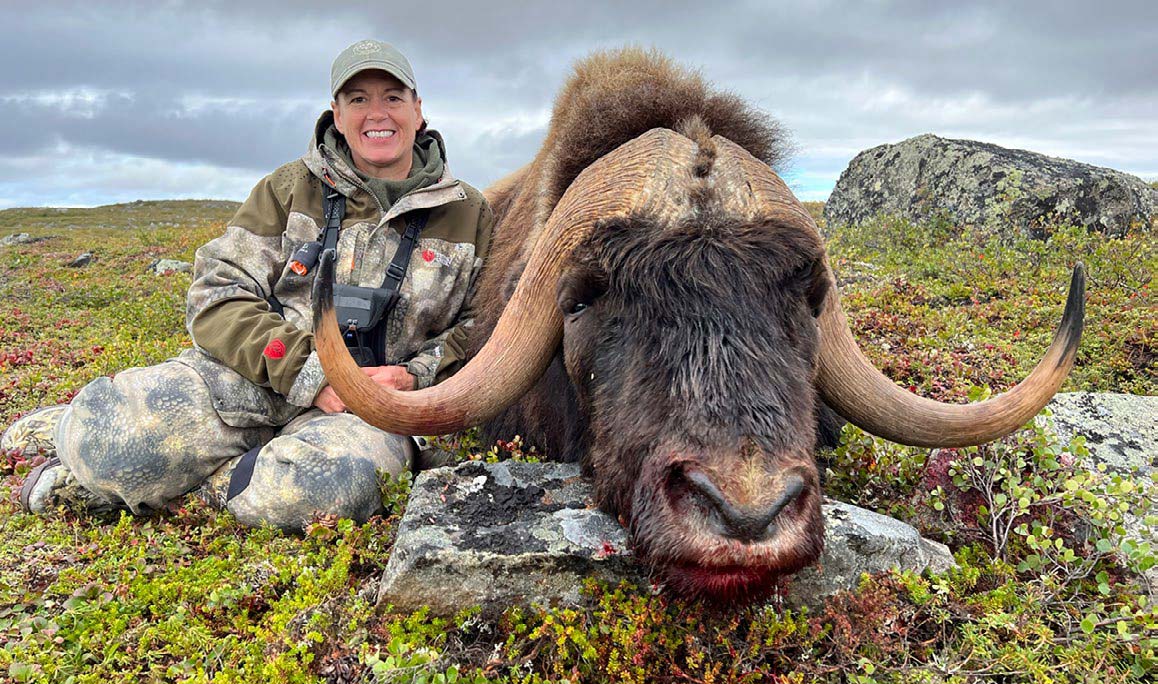
So many emotions ran through me at that moment. I was all choked up and turned to Kevin and TJ and said that was a little emotional! Kevin came over and gave me a huge bear hug. It was at that moment that I realized that everything had come full circle. I started my hunting career in the arctic and after many great adventures, completed my Super 10 where it all began. What a special hunt and such special people to share the moment with. Once we got him all set up, I spent a bit of alone time looking down on my magnificent muskox and contemplate how much my life had vastly changed all in the name of hunting.
Of course, now the heavy lifting really began. While Kevin and I were field dressing the massive beast, TJ took all the gear and some meat back to the boat and hastily dumped it and then ran back to help us carry out the remainder of the load. There is no easy way to cape out a muskox in the field, so once we had him completely boned out and meat stored in game bags, we rolled up the cape, with the head attached and secured it to Kevin’s pack. Kevin sat on the ground and rolled into his pack and then rolled onto his knees. With superhuman strength and a little help from me, Kevin managed to stand up. He looked like the hunchback from Notre Dame. His pack weighed about 165 pounds and was very top heavy. To this day I can’t believe he managed to carry that entire load the two kilometres to the boat. TJ and I struggled under the weight of the remaining meat and once every precious ounce was at the boat, we headed back to camp. It had been an extremely long day!
The following couple of days were spent helping other hunters packing out their muskox, caping and fleshing and …admiring my magnificent bull.
Once all of the hunters were successful, we spent the rest of our days fishing. One thing Aylmer Lake Lodge is known for, is their massive lake trout and boy did they deliver! On one particular day, the water was pretty rough, and Kevin insisted all the boats stay together for safety’s sake. It was a truly amazing day; we were literally reeling in a fish as soon as we dropped the lure.
ADDITIONAL INFORMATION
Barren ground muskox are one of the few animals that survived the ice age. Just to put it into perspective how old the muskox are – they roamed the tundra with woolly mammoths. They are a truly unique animal. Most people believe they are an ox, but they are more closely related to a goat or sheep and are placed in the bovid subfamily Caprinae. Their ancestors have been in North America for 2,000,000 years and the modern Muskox showed up around 200,000 years ago.
Until the late 1700s, barren ground muskox were found from Point Barrow, Alaska, eastward across the north slope of Alaska and Canada to Port Nelson, Manitoba on Hudson Bay, and northward to include King William Island and the Boothia and Melville Peninsulas. By 1917, domestic and fur-trade hunting had almost exterminated North American muskox populations. In 1927 the Thelon Game Sanctuary was established and saved the muskox on the North American mainland.
The Inuit call muskox Umingmak which translates to “the bearded one.” Muskoxen are aptly named from the strong odor emitted from the males’ glands during the rut to attract females. This gland is located underneath their eyes. The muskox rut is in late summer or early fall, so we arrived right during the height of the rut. Barren ground muskox stand about 53 inches at the shoulder and weight about 750 pounds. They have a larger body and horns than the Greenland muskox. Horns are found on both sexes.
Other species routinely observed around Aylmer Lake Lodge are central barren ground caribou, barren ground grizzly bear, arctic wolf, wolverine, arctic hares, artic foxes, arctic ground squirrel (Inuktitut: siksik), golden eagles, and bald eagles. Also, the lake offers absolutely mind-blowing lake trout and Arctic grayling fishing.
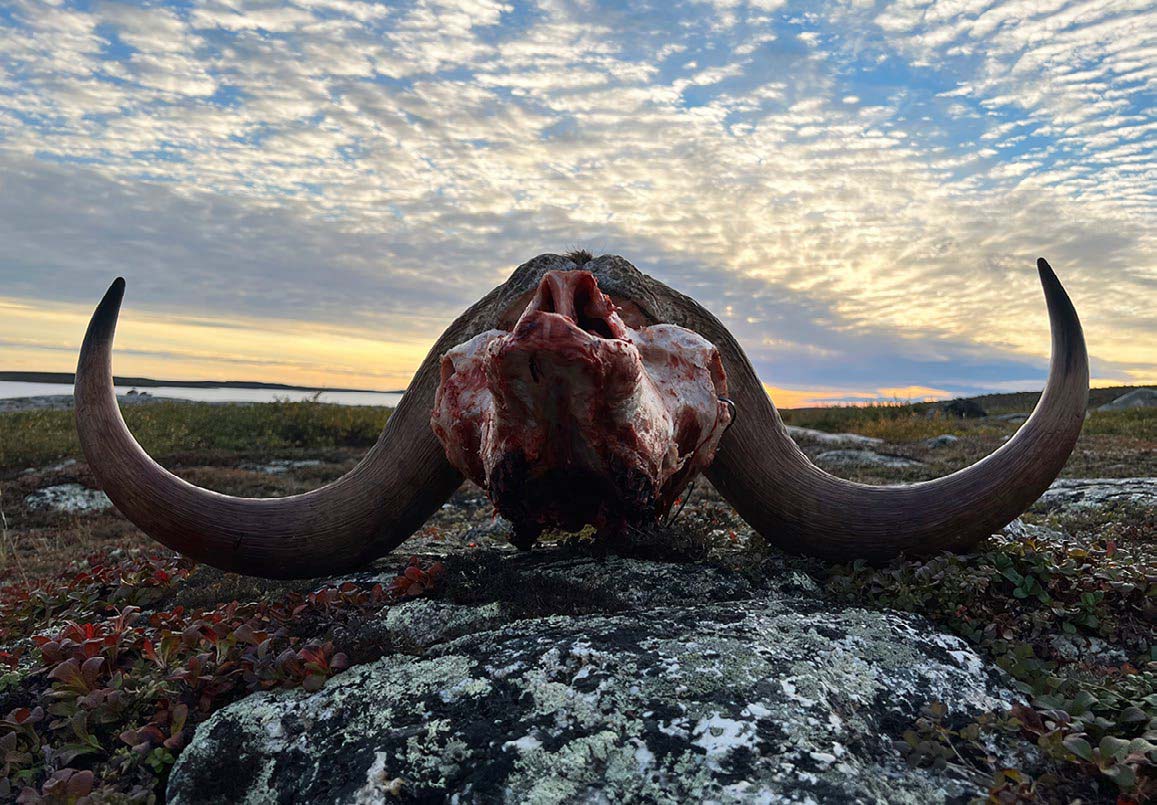
Every boat was having just as much fun as we were. All across the lake, we heard laughter and hollers of “FISH ON!”. TJ and I even managed to get a couple of doubles. That day was another one for the books for me, as I reeled in not one but two lakers over 40 lbs.
I can’t believe it took me 17 long years to go back to the barrens of the Northwest Territories. When we first arrived, all the vegetation was green and as the days passed the tundra change to a beautiful carpet of red and yellow. Each day we’d see groups of muskox and caribou travelling across the tundra.
I was so blessed to take a massive muskox and to top that off managed to land two huge lake trout above 40 lbs. in one day. This truly was an amazing journey in the arctic and I really hope it won’t be another 17 years before I return.
After the 60-day drying period, I had the muskox measured and it is currently ranked #4 in Boone & Crockett and #2 rifle in SCI records.
EQUIPMENT USED:
RIFLE:
Sako 300 Win mag topped with a Zeiss V6 3-18×50
AMMUNITION:
Hornady Precision Hunter 200 gr. ELD-X
For more information about hunting or fishing at Aylmer Lake Lodge, contact Kevin McNeil at: or visit them on their Facebook page:
More about the Thelon Wildlife Sanctuary:
Links to Outdoor Quest TV Part 1 & 2 of Full Circle in the Arctic:
Outdoor Quest TV Ep#1 2023 Muskox and Lake Trout in NWT Part 1 – YouTube
Outdoor Quest Ep#2 2023 Muskox and Lake Trout in NWT Part 2 – YouTube
Per our affiliate disclosure, we may earn revenue from the products available on this page. To learn more about how we test gear, click here.






